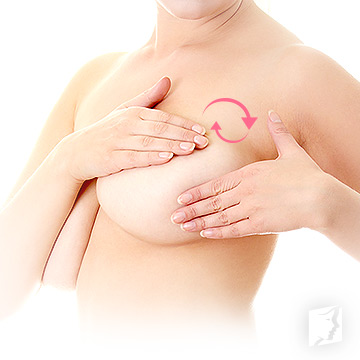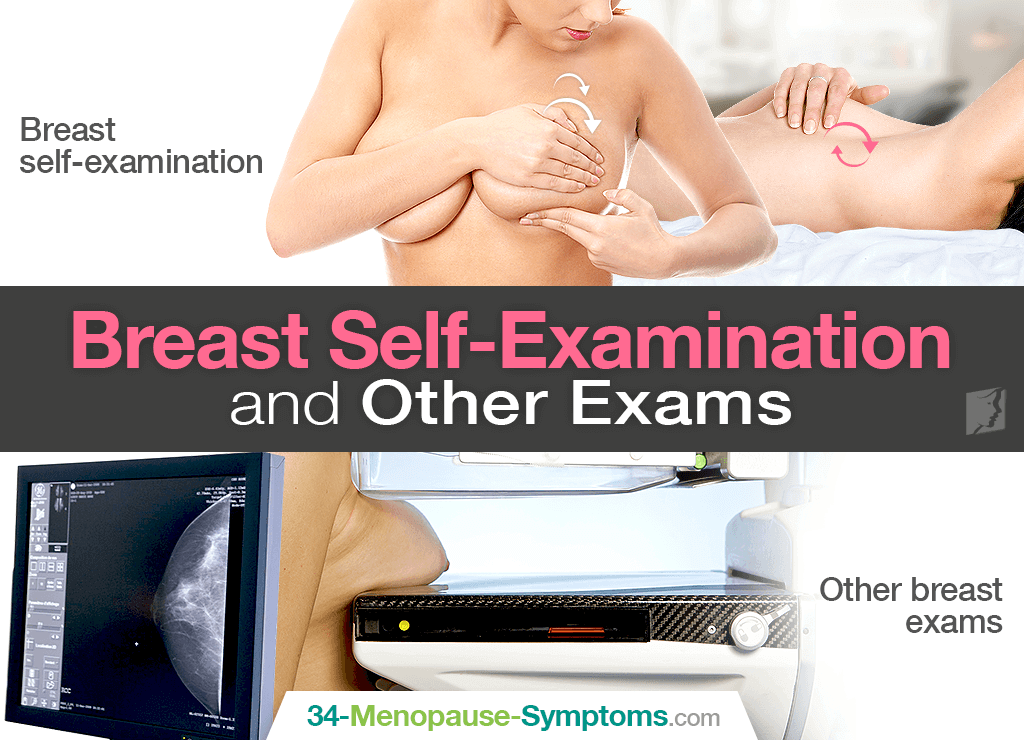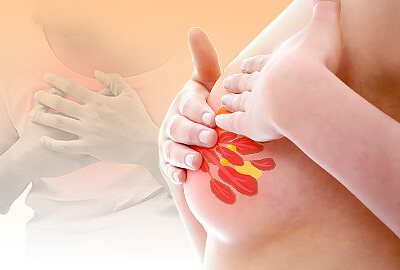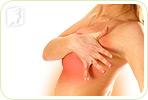Self-breast exams can help women detect abnormalities within their breast tissues before they develop into more serious conditions. Although commonly used as a means of early breast cancer detection, breast exams should be performed by women of all walks of life.
Continue reading to learn more information about breast self-examination techniques, and make it a routine part of your life from pre- into postmenopause.
Breast Self-Examination
Perform a self-breast exam in two positions: lying down and standing in front of the mirror.
Lying Down
When lying down, your breast tissue spreads out evenly along the breast wall, making it easier to feel abnormalities within the tissues.
Right side. Start by placing your right hand behind your head. Take the first few pads of your fingers from your left hand, and move them around your right breast in small, firm, circular motions, about the size of a quarter. Make three circles in each spot, and vary the amount of pressure applied with each circle - light, medium, and deep - in order to feel all levels of the breast tissue and note any possible breast tenderness. When complete, move to the next area one finger-width away. Make sure to cover the entire breast and armpit before continuing to the left breast. Also, squeeze the nipple to see if there are any watery, milky, bloody, or yellow-colored secretions.
Left side. Repeat the process above for the left breast, also making sure to check the whole breast with small circular motions of varying pressures. Note any abnormal tissue thickening, lumps, etc.
During the process, the pattern you follow is up to you. What's important is covering the whole breast, whether that be from nipple outwards or moving your fingers up and down vertically in rows, from the armpit to the cleavage.
Standing in Front of Mirror

First, place your hands on your hips. Check for unusual size, shape, or color of the breasts as well as swelling, rashes, or bulging. Also, verify that your nipples have not changed position or inverted.
Next, raise your arms above your head and slightly lean forward. Look for any visual or physical changes also, such as those listed above.
Then, rest your palms on your hips and flex your chest muscles. Observe any atypical dimpling or puckering, particularly in one breast or the other.
Finally, feel your breasts while standing. Use the same movements as you did when lying down. You may perform this last step in the shower if easier to move your fingers around.
Any physical or visual changes noted when lying down or standing should be brought to the attention of your doctor.
Other Breast Exams
Having clinical breast exams on a regular basis can help detect or confirm any abnormalities. A woman's medical history will help her decide which screening test she may need and when.
Other breast exams, aside from breast self-examination, include mammograms, such as 3-D mammograms and contrast-enhanced digital mammography (CEDM); breast ultrasounds; and breast MRIs.
Breast Self-Examination Tips
First of all, don't panic if you do feel a lump. It is reported that over half of lumps found are benign, or noncancerous. Report to your doctor for further evaluation and exams, such as a mammogram.
Any lumps or irregularities felt during a breast self-examination can be tracked in a journal for easier remembrance. This will also help you detect any patterns in their occurrences if they're cyclical, such as lumps appearing at certain times of the menstrual cycle.
Also, breast exams should be performed at least once a month, several days after your period stops - if you still have periods - or on the same day each month. This will ensure that your breasts will be less likely swollen or tender from hormonal fluctuations. Keep in mind that the more you examine your breasts, the easier it will be for you to identify any irregularities on a monthly basis.
Key Takeaways
Breast self-examinations help women take charge of their health and keep track of their own bodily changes. While often used as a means of early breast cancer detection, self-examination should be performed throughout life, from pre- into postmenopause. The techniques vary when lying down and when standing in front of a mirror, but the general principle stays the same: take note of any abnormal physical and visual changes in your breasts. Sometimes you will notice chest tenderness, which, if painful, can be relieved with effective breast pain treatments. But in all instances, seek further action accordingly.
Sources
- Breastcancer.org. (2018). Breast Self-Exam. Retrieved September 18, 2018, from https://www.breastcancer.org/symptoms/testing/types/self_exam
- Maurer Foundation. (n.d.). How to do a Breast Self-Exam (BSE). Retrieved September 18, 2018, from https://www.maurerfoundation.org/about-breast-cancer-breast-health/how-to-do-a-bse-breast-self-exam/
- MedlinePlus. (2018). Breast self-exam. Retrieved September 18, 2018, from https://medlineplus.gov/ency/article/001993.htm
- Memorial Sloan Kettering Cancer Center. (n.d.). Mammograms & Other Types of Breast Exams. Retrieved September 18, 2018, from https://www.mskcc.org/cancer-care/types/breast/mammograms-breast-exams
- National Breast Cancer Foundation, Inc. (n.d.). Breast Self Exam. Retrieved September 18, 2018, from https://www.nationalbreastcancer.org/breast-self-exam




